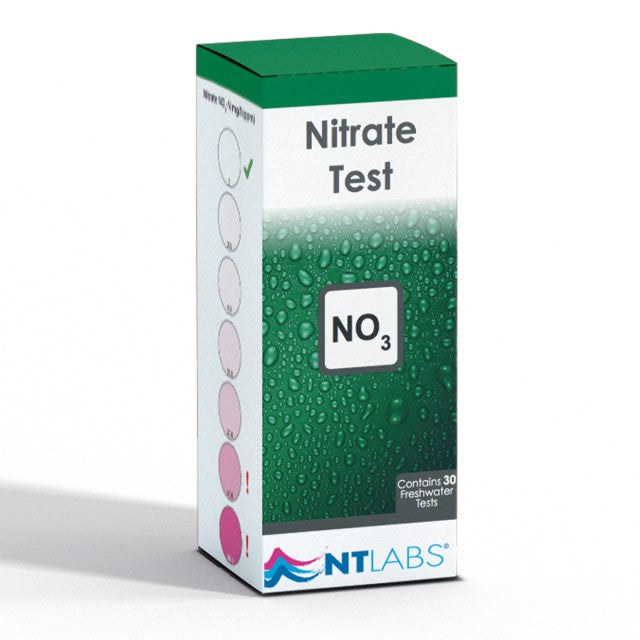No Products in the Cart

Flexible interest-free payment options available at checkout.
From as little as R 60.00 per payment. Learn more
NTLabs -Nitrate Test is available for pre-order – please confirm stock before ordering!
Understanding Nitrate in Your Aquarium
Nitrate is the final product in the nitrogen cycle. It is created by beneficial bacteria that break down the toxic waste products excreted by fish—ammonia and nitrite. While nitrate is far less harmful than ammonia or nitrite, excessively high levels (above 100 mg/L) can begin to affect fish health, particularly their growth and vitality.
Ideal Nitrate Levels
The ideal nitrate level in an aquarium is as close to zero as possible. This indicates a balanced ecosystem, where the waste produced by fish is being efficiently used up by plants. However, maintaining a level of zero is extremely challenging, as even most domestic tap water contains small amounts of nitrate. It is important to note that nitrate feeds algae, so keeping it low also helps to prevent unwanted algal blooms.
Managing Incorrect Nitrate Levels
If your nitrate levels are too high, the following steps can help restore balance:
Perform regular partial water changes using dechlorinated water to dilute nitrate accumulation
Check your tap water for nitrate levels, as some may already contain measurable amounts
Increase the number of healthy, fast-growing aquatic plants to absorb excess nitrate and outcompete algae
Reduce overfeeding and avoid overstocking, as both contribute to excess waste and nutrient buildup
The goal is to create a self-sustaining balance where waste is processed and absorbed effectively by plant life, not algae.
How to Perform a Nitrate Test
Ensure the test tube is clean
Add 5 millilitres of aquarium water to the test tube
Shake the Nitrate-1 reagent bottle thoroughly in good light until no sediment remains at the bottom
Add 6 drops of Nitrate-1 and 6 drops of Nitrate-2 to the test tube
Replace the cap and shake the test tube thoroughly
Wait 10 minutes for the test to develop
Compare the sample colour to the provided colour chart
A colourless sample indicates zero nitrate
Any pink tint indicates the presence of nitrate in the water
This test reports nitrate levels as NO3-N, in line with fish-safe guidelines. To convert to ionic concentration (NO3⁻), multiply the result by 4.43.


